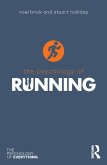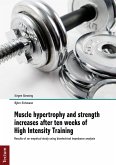Research Paper (postgraduate) from the year 2015 in the subject Sport - Kinematics and Training Theory, grade: 2,0, Auckland University of Technology (Sport Science), language: English, abstract: High intensity interval training induces numerous morphological and metabolic adaptations in skeletal muscle. On one hand it includes mitochondrial biogenesis and therefore an enhanced capacity to oxidize fuels such as glucose and fats. This implies that a combination of anaerobic and aerobic energy systems rely on muscle glycogen and/or blood glucose as an important substrate for energy production. On the other hand high intensity intermittent modalities improves aerobic respiratory control sensitivity resulting from increased mitochondrial density. High intensity and reduced volume of the workout utilizes type 2 muscle fibres. This muscle fiber has an anaerobic glycolytic metabolism and produces lactate by using glycogen. This results in the production of the growth hormones testosterone and somatropin. This research question plays an important role for people who are affected by type 2 diabetes or obesity which increases morbidity and mortality. Stroke, hypertension and heart disease are some of the most common disorders associated with these conditions.
Dieser Download kann aus rechtlichen Gründen nur mit Rechnungsadresse in A, B, BG, CY, CZ, D, DK, EW, E, FIN, F, GR, HR, H, IRL, I, LT, L, LR, M, NL, PL, P, R, S, SLO, SK ausgeliefert werden.









